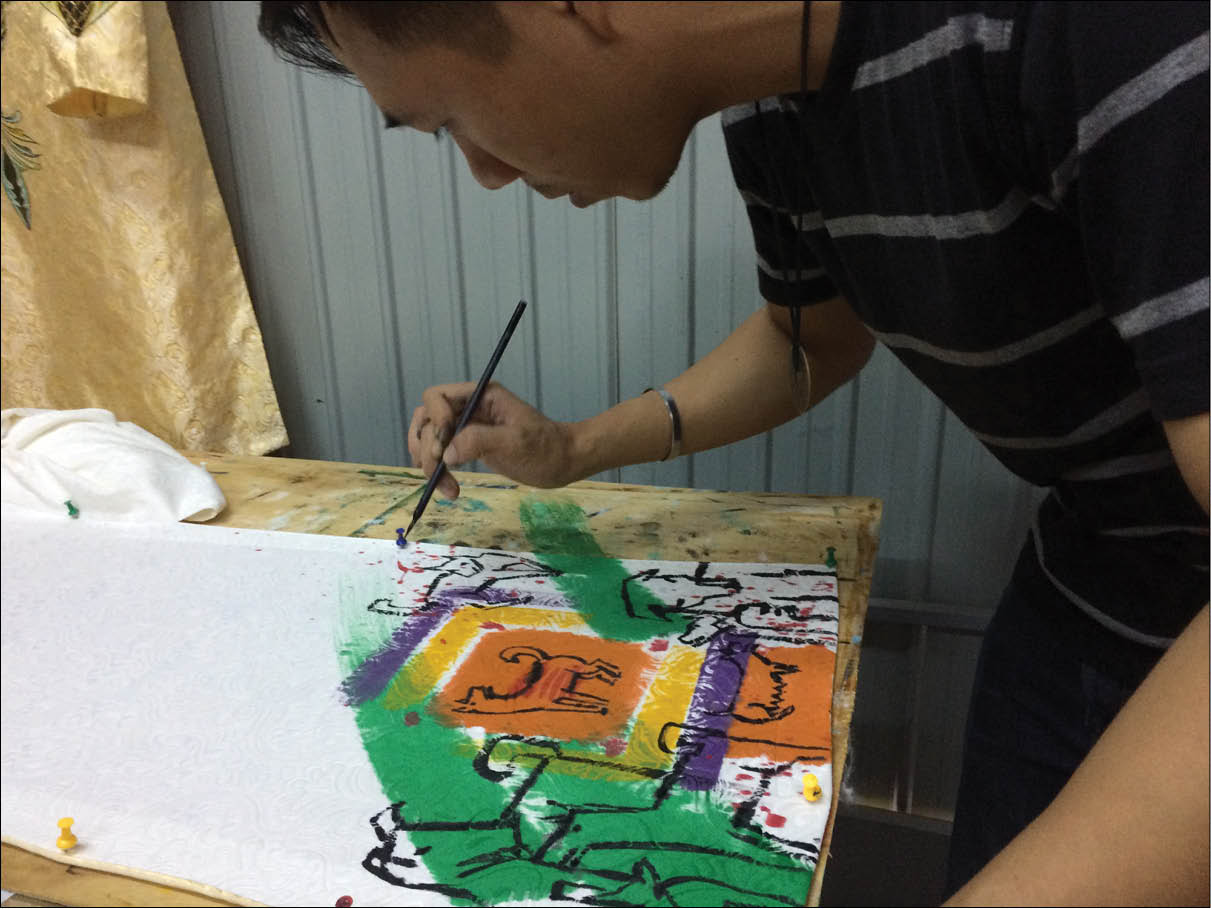
Tran Huu Nhat the painter
Although the dog is very close to humans, designing ao dai using the image of the dog is a new idea, not easy to fulfil. "Since these ao dai are for spring, they must be beautiful, colorful and traditional-looking. I got the inspiration from Dong Ho and Sinh folk paintings and tried to combine with the modern style of cubism. I wanted to keep these ao dai simple. Beauty comes from such simplicity," said the painter.
The collection, including two items for males and one for females, was done within a month. Why three? "Three is an odd number, symbolizing action and change. Number three also represents the three styles I used to make these ao dai. Number 3 is widely used in Vietnam such as in triple gates, tam the (past, present and future), tam phuc (happiness, wealth and longevity). I want to bring peace and progression to people through this trio," said Nhat.
The first ao dai for males was inspired by the stone dog in Vietnamese culture. The custom of worshipping dogs has been long existed. In Hue, villagers in Pho Dong and Pho Trung (Nam Pho) regard the dog as god and worship it in temples. Dao Duy Anh wrote: "In the past, people never built the gate on the central axis. They did not want outsiders to look directly into the house. They also never built a path leading to the center of the house. Neither did they build their house in front of the temple. In case they had to do so, they buried a dog at the gate to block the bad air." This meant the dog brought good luck for people. With this in mind, Tran Huu Nhat painted the dog on the ao dai to welcome the Year of Dog with colorful patterns easy to comprehend. The dogs hide themselves among spring flowers, plants and birds. Along the buttons are colorful flowers in contrast to the thoughtful faces of the dogs as a representation of the blessing and prosperous spring.
.jpg)
Trio of high-quality brocade ao dai
On the other ao dai for males, Tran Huu Nhat painted more than one dog in the style of cubism. With symmetric, bold and flexible brush strokes, he wished for togetherness, fullness and harmony of people, heaven and earth. At the center of the painting is a very Vietnamese-looking dog, surrounded by yellow squares, symbolizing the governance of the universe over everything on earth. This ao dai is the combination of the five basic elements: metal (white), wood (green), water (black), fire (red) and earth (yellow), representing the harmony of yin and yang through the style of cubism.
As for the ao dai for females, realistic description was applied to make it stand out and the collection diverse. Employing the perspective drawing style, the painter depicted the three puppies as natural and realistic as they are. At first sight, the painting look neglected with careless blanks, but in reality, that is the natural connection between individuals. Black innocent puppies sticking out their tongues on white brocade background give a vivid and oriental look for the costume.
The three ao dai were completed at dusk in his studio on Vo Thi Sau St., Hue City. Nhat said for about ten years now, he has always painted the year-animals on the ao dai but this time, painting the dog brought him a special feeling, both strange and familiar. "The dog is often regarded by many people as house guard but and it has a precious character: it never denies its owner. The dog is the smartest, the most faithful and sentimental animal of all the 12 year-animals," said Nhat frankly.
After December comes January. Peach blossom and apricot blossom are in bloom. Beloved family members are coming home. The collection of ao dai for the New Year evokes the image of homeland with trees, the sun and solitude stone dogs. It is like the new-year greetings for everyone from the young painter.
Story and photos: Nguyen Huong
